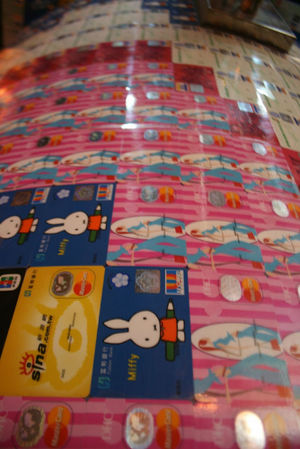Japan/Gallery
< Japan
Jump to navigation
Jump to search
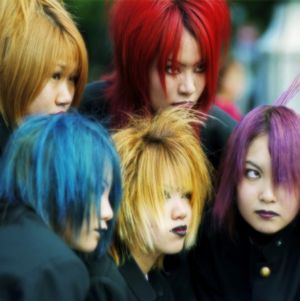
'Cosplayers' (from コスプレ kosupure 'costume roleplay') - teenagers who dress as characters from film, television or animé cartoons - pose for the cameras in Harajuku, Tokyo. These girls are dressed as members of the Japanese band 'Dir en grey'. Photo © by Sonny Santos, used by permission. |
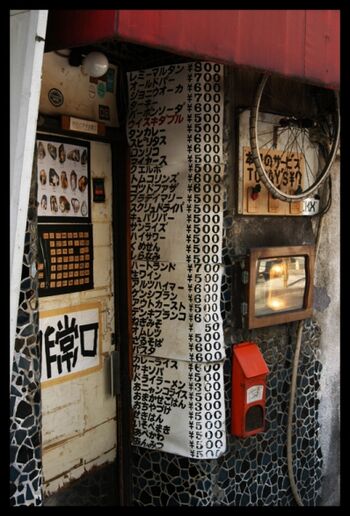
This bar menu in Shinjuku, Tokyo lists food and drink in both angular katakana - for loanwords or to make signs easier to read - and the curvy hiragana script - for native vocabulary. Top of the list, in katakana, is レミーマルタン - Remii Marutan 'Remy Martin' brandy; bottom, in hiragana, is あんみつ anmitsu - a jelly to finish a meal. The sign on the door (非常口 Hijoo Guchi 'fire exit') is written in kanji, or Chinese-derived characters. Photo © by Sonny Santos, used by permission. |
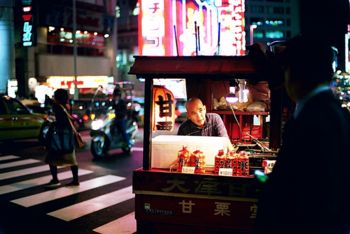
Japan's capital, Tokyo, is a city of packed streets, neon logos and the ancient tucked away alongside the modern. Photo © by Sonny Santos, used by permission. | |
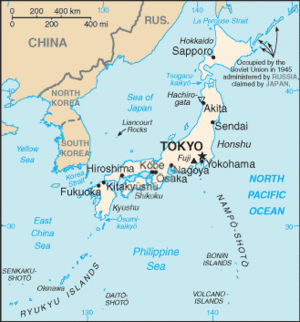
Japan and its neighbours. | |
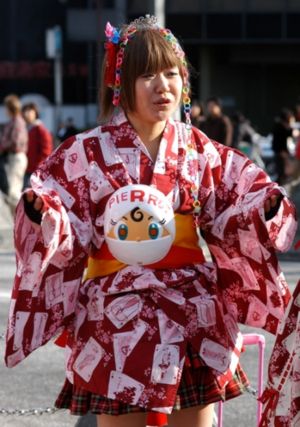
Traditional and modern meet on the streets of Harajuku, Tokyo. Photo © by Sonny Santos, used by permission. | |

An early seventeenth-century map drawn by an Italian missionary in China. It is the first map in which the name 'Sea of Japan' appears. Image: Public Domain |
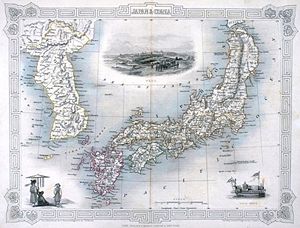
A mid nineteenth-century British map. Image: Public Domain |

Promoting a maid-kissa (メイド喫茶 meido-kissa, 'maid coffee shop') in Akihabara, Tokyo will involve looking the part; young women in maidlike waitresses' outfits are a common sight in this electronics quarter of the city. Photo © by Sonny Santos, used by permission. |
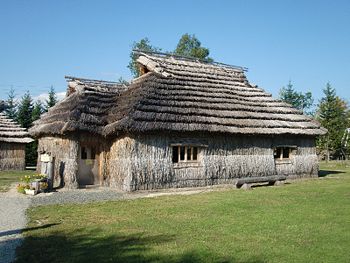
Northern Japan is home to the indigenous Ainu people. A cise is a traditional Ainu dwelling, with a thatched roof and entranceway separate from the main interior space. These replicas can be seen at Nibutani, an Ainu-majority village in Hokkaido. |
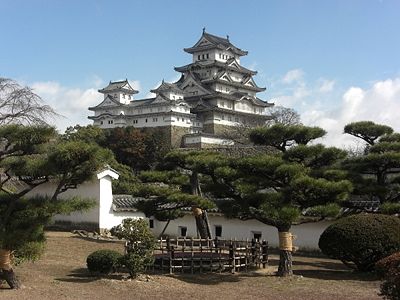
Himeji Castle is a UNESCO World Heritage site; its defences and gardens showcase two sides of Japan's history and culture. |
Bank cards with cute characters on them are widely available in Japan.
|
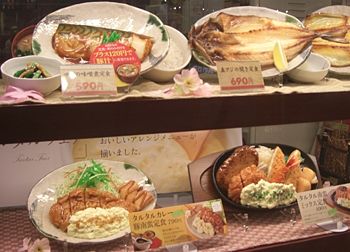
Japanese restaurants often display plastic replicas of many dishes, so diners can see exactly what to expect. |
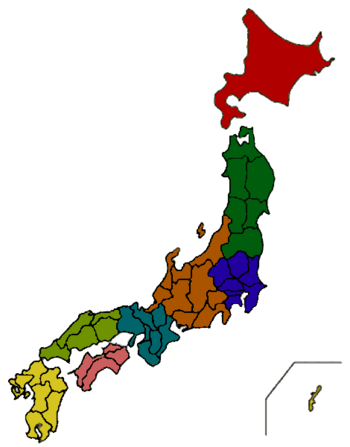
Japan's islands are divided into 47 prefectures. |
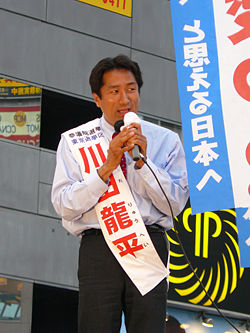
Japanese politician Ryuhei Kawada campaigning in elections to the upper house of the Japanese parliament in 2007; Japan is a democracy where both party-affiliates and independents such as Kawada can successfully seek office. |
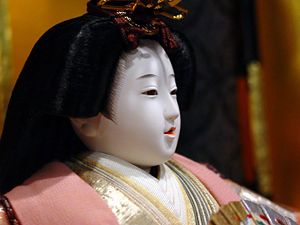
A traditional Japanese doll. The Hina Matsuri (雛祭り 'Doll Festival') is held every 3rd March in Japan.
|
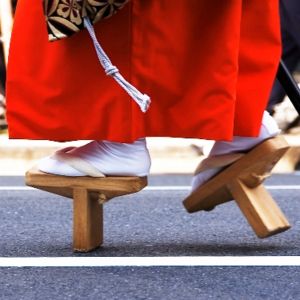
|
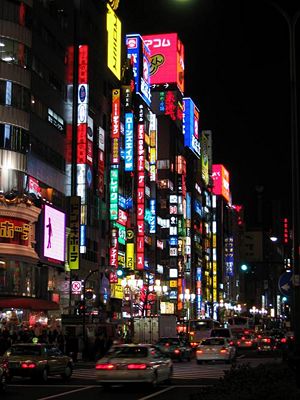
|

Tokyo Station commuters.
| |
| Return to Japan |
